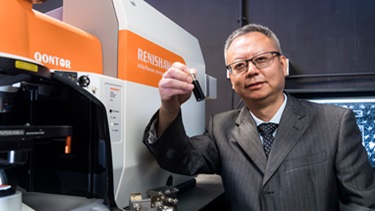Hydrogen generation breakthrough for a cleaner future

Sponsored by

Sponsored by

An international research team led by Professor Zhang Hua has successfully developed a highly efficient electrocatalyst that can enhance hydrogen generation through electrocatalytic water splitting.
Novel catalysts using transition-metal dichalcogenide (TMD) enable superior efficiency and high stability during the electrocatalytic hydrogen evolution reaction (HER) have been developed at CityU.
HER is a vital step in electrocatalytic water-splitting, also known as the water electrolysis technique, for hydrogen production.
“Hydrogen generated by electrocatalytic water splitting is regarded as one of the most promising clean energies for replacing fossil fuels in the near future, reducing environmental pollution and the greenhouse effect,” said Professor Zhang Hua, Herman Hu Chair Professor of Nanomaterials at CityU, who is spearheading the research.
Professor Zhang’s collaborators come from Imperial College London and researchers from universities and research institutes in Hong Kong, mainland China, Singapore and the UK.
The international team has been exploring how to enhance the performance of the HER process by engineering the crystal phase of nanomaterials for several years. Although TMD nanosheets with unconventional crystal phases possess great potential to be used as catalyst supports, fabricating such sheets pure enough for HER is far from straightforward.
But in this research, Professor Zhang’s team has developed a new method to prepare unconventional-phase TMD nanosheets with high phase-purity and quality. Furthermore, they have investigated the crystal phase-dependent growth of noble metals on the TMD nanosheet supports.
Technically speaking, they found that the 2H-phase template facilitates the epitaxial growth of Pt nanoparticles, whereas the 1T′-phase template supports single-atomically dispersed Pt atoms (s-Pt). The synthesised s-Pt/1T′-MoS2 serves as a highly efficient catalyst for HER and can work for 500 hours in the water electrolyser, demonstrating that 1T′-TMD nanosheets could be effective supports for catalysts.
“We will develop more efficient catalysts based on this finding and explore their applications in various catalytic reactions,” said Dr Shi Zhenyu, a postdoctoral researcher in CityU’s Department of Chemistry involved in the research.
These findings expand the scope of phase engineering in nanomaterials, paving the way for the design and synthesis of highly efficient catalysts, contributing to cleaner energies and more sustainable development.
Professor Zhang Hua, Herman Hu Chair Professor of Nanomaterials.